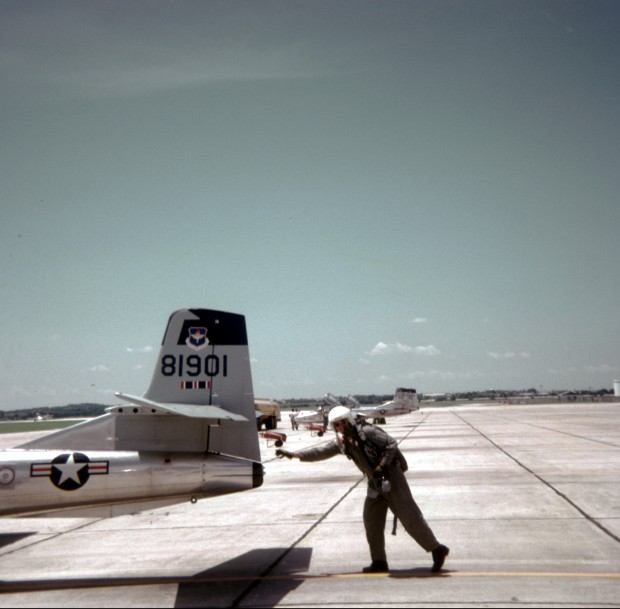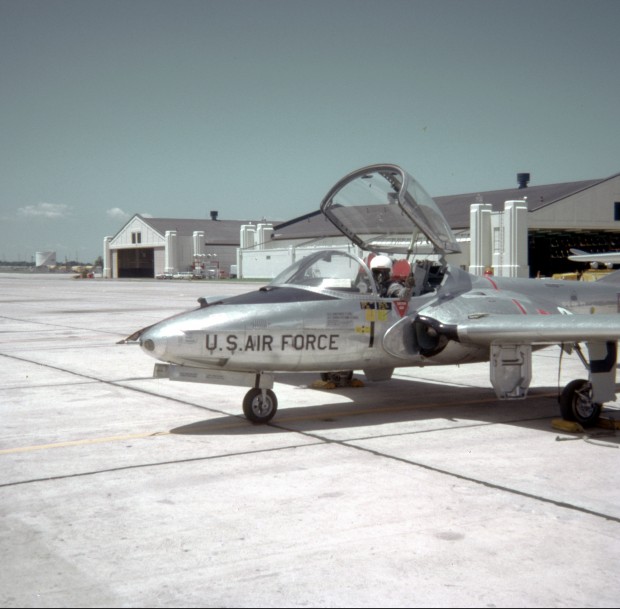The T-37 was our primary jet trainer when I went through UPT (Undergraduate Pilot Training).
It was built by Cessna, and served its function well as our primary jet trainer, at the time. It may have been ‘slow,’ (in relative terms), and unpressurized – but it was noisy and hot! The IP sat on the right; the student on the left. It had the nickname of “Tweet” because of the intense noise it made – sounded like a ‘tweety bird!’
I was doing fine in it, until my mid-phase Contact Check. I flunked it. (Another story.) I think then I might have lost a little confidence, who knows?
The acceptable limit for the engines to accelerate from Idle to Mil (full power) was 17 seconds. If you got into a high sink rate on final approach, with the throttles at Idle; well, this was not good!
Another nasty characteristic of the Tweet was, it was susceptible to spins. I didn’t mind them when we deliberately entered them – it was the ‘unintentional’ spins that got my attention. This usually happened when you pushed the jet too “hard;” and only happened to me once!
I didn’t particularly “dislike” the Tweet, but it wasn’t a jet that made my ‘blood boil’ either. Matter of fact, toward the end of the T-37 program, I came to enjoy it. Here I am, early in the program, trying to “catch up” to the jet:
 There was a standing joke the IPs had. They would call ATC (Air Traffic Control) and ask if they were ‘painting’ anything on radar, perhaps 5 – 7 mils behind the jet. They would then comment with something like: “That”s where I reckon my student is.” Fear, sarcasm and ridicule – the ATC IP’s favorite tools of instruction! LOL….
There was a standing joke the IPs had. They would call ATC (Air Traffic Control) and ask if they were ‘painting’ anything on radar, perhaps 5 – 7 mils behind the jet. They would then comment with something like: “That”s where I reckon my student is.” Fear, sarcasm and ridicule – the ATC IP’s favorite tools of instruction! LOL….
And now, ready to go:


